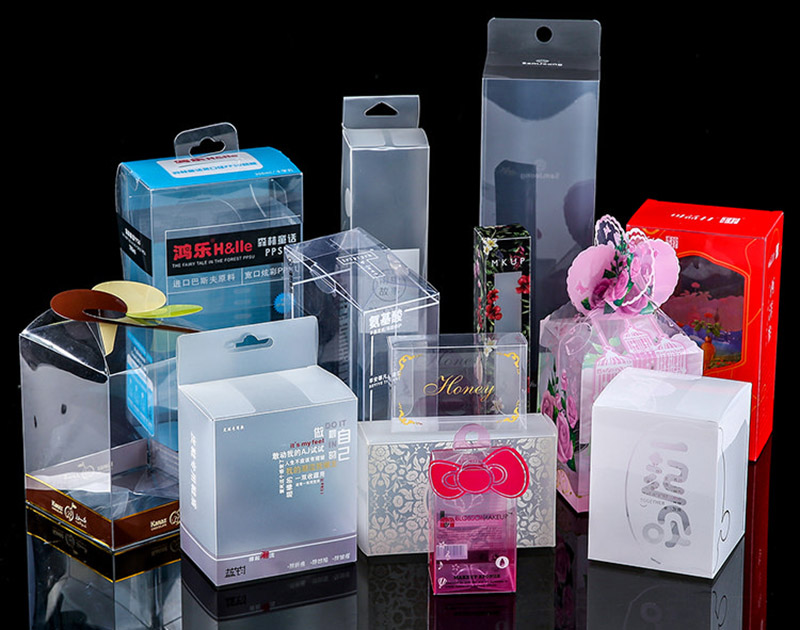Whether it's the neatly arranged snack packaging on supermarket shelves or the exquisite gift boxes at cosmetics counters, transparent plastic boxes always capture consumers' attention with their clear, easy-to-understand presentation. These seemingly similar transparent boxes actually harbor different "plastic genes."
The key to transparent plastic boxes lies in the choice of plastic material. The molecular structure, processing technology, and environmental properties of different plastics directly determine the performance and application of the box. Currently, the four most common transparent plastic box materials on the market are PVC, PET, PP, and PS, each with its own advantages and suitability for different scenarios.
1. PVC is a veteran material in the transparent plastic packaging box industry, long-standing in the market thanks to its excellent transparency, flexibility, and low cost. Its hardness can be adjusted by adding plasticizers, allowing it to be made into both soft films for food packaging and rigid boxes for electronic products.
Advantages:
High transparency: Allows for clear product display, making it particularly suitable for visually appealing applications such as cosmetics and toys.
Flexible processing: Can be formed into a variety of shapes through processes such as thermoforming and blister forming to meet customized needs. Low Cost: Affordable raw material prices make it suitable for mass production.
Controversial Points:
PVC's environmental impact has been widely criticized. Its production process may release harmful substances (such as vinyl chloride monomer), recycling is difficult, and incineration produces pollutants such as dioxins. Consequently, many countries and regions have restricted the use of PVC in food packaging and children's toys, seeking more environmentally friendly alternatives.
2. PET, due to its environmental friendliness, safety, and high transparency, is becoming the preferred choice for high-end packaging.
Advantages:
Environmentally friendly and non-toxic: It meets food-grade standards, can come into direct contact with food, and is recyclable, reducing environmental pollution.
Strong Physical Properties: High hardness, good toughness, and strong impact resistance make it suitable for protection during transportation.
Glossy Surface: Vibrant colors after printing enhance the product's quality.
Applications:
PET boxes are commonly used in the food, pharmaceutical, and daily chemical industries, such as chocolate packaging, medicine refill boxes, and skincare gift boxes. Its environmentally friendly properties also make it a popular export packaging option, meeting the stringent standards of regions like the EU.
3. PP plastic boxes are renowned for their high-temperature and chemical resistance, making them a popular choice for packaging food service utensils and heat-resistant products. They come in a variety of finishes, including glossy, frosted, and transparent. Transparent PP boxes allow for direct display of product contents while maintaining practicality.
Advantages:
High-temperature resistance: Withstands temperatures exceeding 100°C, making them suitable for microwave heating and high-temperature sterilization.
Safety and non-toxic: Meets food contact standards and is commonly used in takeout containers, baby bottles, and other products.
High impact resistance: Resistant to breakage, making them suitable for the bumps of transportation.
Limitations:
PP has poor plasticity, tends to fade in color during processing, and lacks the surface gloss of PET. Therefore, it is primarily used for functional packaging rather than high-end display applications.
4. PS plastic boxes are characterized by their low density and low cost, making them common in blister packaging (such as the inner lining of electronic products). However, they lack toughness, are prone to brittle cracking, and cannot be made transparent (only partially transparent), limiting their application.
Applicable Applications:
PS is primarily used for disposable packaging or applications where transparency is less critical, such as inner boxes for stationery and small accessories.
The selection of materials for transparent plastic boxes is evolving towards environmental friendliness, functionality, and customization. The choice of material for custom transparent boxes goes far beyond simply visual clarity. From the classic design of PVC to the environmentally friendly design of PET, from the practicality of PP to the economical design of PS, each plastic carries specific properties and missions.


copyright @ 2025 Xiamen Jiangxin Plastic Box Co., Ltd. All Rights Reserved.
Sitemap
/ Blog
/ Xml
/ Privacy Policy
 Network Supported
Network Supported